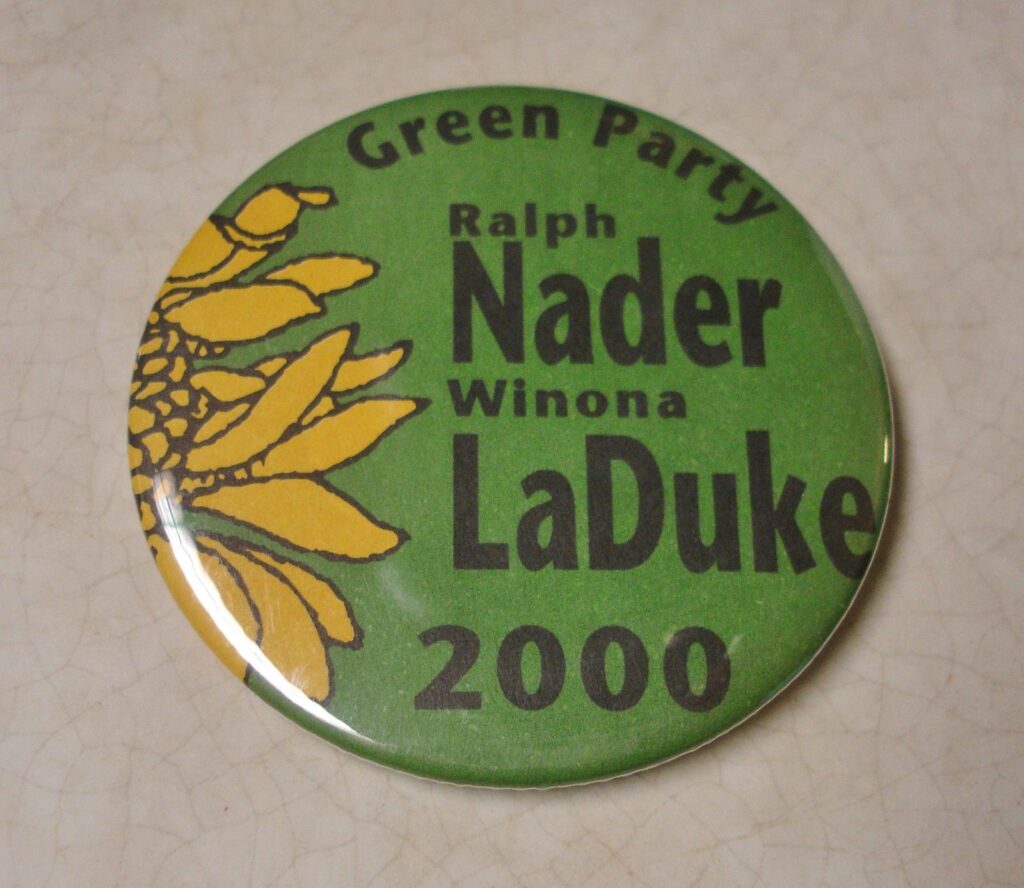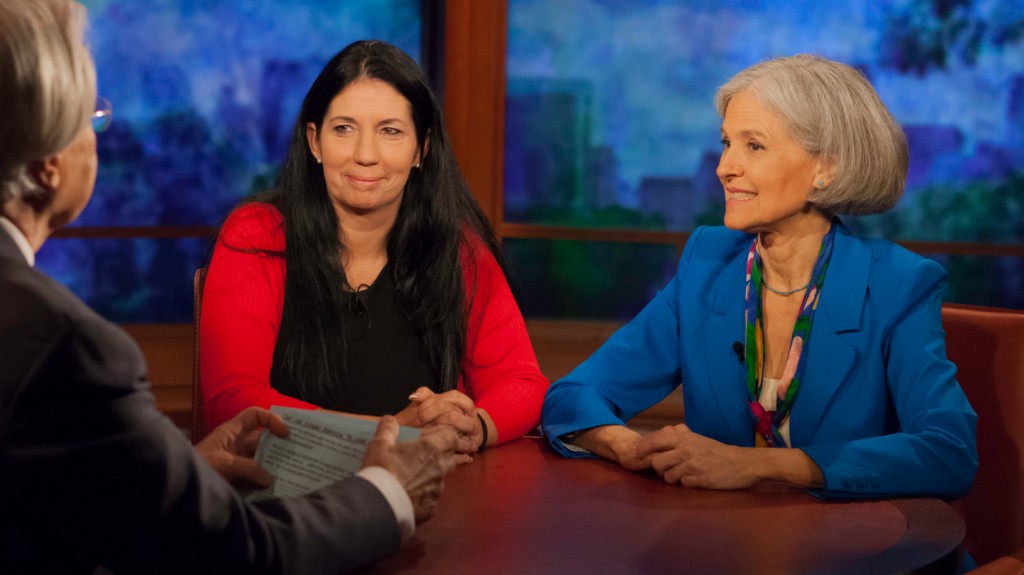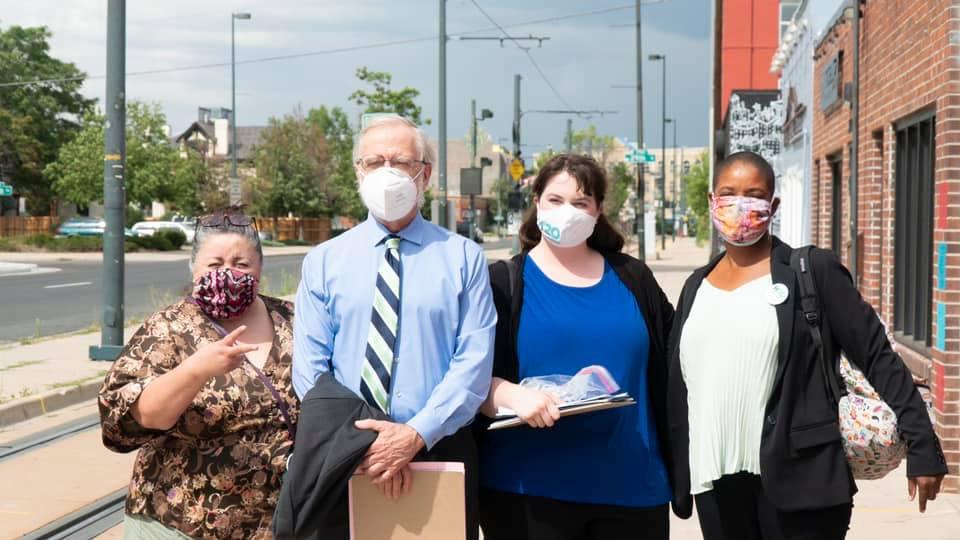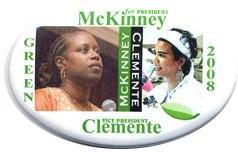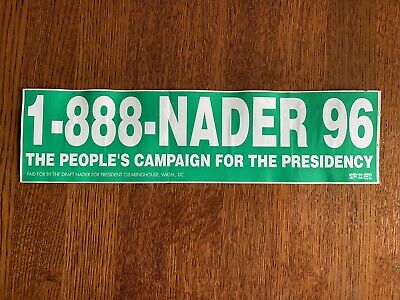Ballot status and presidential primary matching funds
Share
A summary and analysis of the correlation in Green presidential campaigns
By Mike Feinstein, Green Party of California
Green Party presidential candidates have run in seven presidential elections between 1996 to 2020.
The track record from these campaigns shows there is a strong correlation between ‘in how many states Green Party presidential candidates qualify for the ballot’ — and ‘whether these Green candidates are able to raise presidential primary matching funds’ — which they apply towards ballot status in their campaigns.
HR1/S1 takes direct aim at the Green Party’s ability to appear on the ballot, by de facto taking away this major source of funding Greens use to qualify for the ballot, by raising the threshold to qualify for the funds to a level unreachable by most Green candidates.
If Democrats make it virtually impossible for Greens to qualify for these funds via HR1/S1, that means Green presidential candidates won’t be on the ballot in most states.
Of the seven historical Green presidential nominees, three times they qualified for and received federal matching funds (2000, 2012, 2016) – and there was a strong correlation between the amount they raised and the number of additional ballot lines they gained, beyond those the Green Party already had going into that cycle.
A fourth time (2020) the campaign raised enough money to qualify for matching funds but did not receive the funds during the course of the campaign, nor even eight months after the campaign (at the time of this publication, it is still under process with the Federal Elections Commission.)
The other three-time, the campaigns (1996, 2004, 2008) did not apply for nor receive matching funds.
Here is a look at each campaign – whether it qualified for presidential primary matching funds, how much it received and how many additional ballots it qualified for.
Summary (chronological order)
1996 – Green Party had six existing state party ballot lines, the campaign gained 16 November 1996 general ballot lines (13 as Green, two as independent, one as Liberty, Ecology, and Community), received no matching funds
2000 – Green Party had 11 existing state party ballot lines, the campaign gained 33 November 2000 general election ballot lines (29 as Green, four as independent, received $723,307.65 in matching funds
2004 – Green Party had 20 existing state party ballot lines, the campaign gained nine November 2004 general election ballot lines (nine as Green), received no matching funds
2008 – Green Party had 20 existing state party ballot lines, the campaign gained ten November 2008 general election ballot lines (nine as Green, one as independent), received no matching funds
2012 – Green Party had 15 existing state party ballot lines, the campaign gained 22 November 2012 general election ballot lines (19 as Green, three as independent), received $372,139.44 in matching funds
2016 – Green Party had 22 existing state party ballot lines, the campaign gained 23 November 2016 general election ballot lines (20 as Green, three as independent), received $456,035.39 in matching funds
2020 – Green Party had 21 existing state party ballot lines, the campaign gained nine November 2020 general election ballot lines (seven as Green, two as independent), qualified for over $100,000 in matching funds, but did not receive them during the campaign
Campaign-by-campaign (by the number of matching funds raised)
2000 – Nader/LaDuke
Going into the 2000 presidential election cycle, Ballot Access News reported that as of October 1999, the Green Party was already on the ballot in 11 states for the November 2000 general elections.
The Green Party Ralph Nader/Winona LaDuke campaign qualified for and received $723,307.65 in presidential primary federal matching funds.
The campaign was on the November 2000 general election ballot in 44 states and the District of Columbia – all of where it had a Green Party label, except Alabama, Kansas, North Dakota, and Ohio where it on as an independent:
Alabama, Alaska, Arizona, Arkansas, California, Colorado, Connecticut, Delaware, District of Columbia, Florida, Hawaii, Illinois, Iowa, Kansas, Kentucky, Louisiana, Maine, Maryland, Massachusetts, Michigan, Minnesota, Mississippi, Missouri, Montana, Nebraska, Nevada, New Hampshire, New Jersey, New Mexico, New York, North Dakota, Ohio, Oregon, Pennsylvania, Rhode Island, South Carolina, Tennessee, Texas, Utah, Vermont, Virginia, Washington, West Virginia, and Wisconsin
This meant the Nader/LaDuke campaign, with the aid of presidential primary matching funds, gained additional ballot status in 33 states.
The campaign also qualified as a write-in candidate in three states:
Georgia, Idaho, Indiana
2016 – Stein/Baraka
Going into the 2016 presidential election cycle, Ballot Access News reported that as of October 2015, that the Green Party was already on the ballot in 21 states and the District of Columbia for the November 2016 general elections.
The Green Party Jill Stein/Ajamu Baraka campaign received $456,035.39 in presidential primary federal matching funds.
The campaign was on the November 2016 general election ballot in 44 states and the District of Columbia – all of where it had a Green Party label, except Alabama, Ohio, and Tennessee, where the campaign was on the ballot as an independent:
Alabama, Alaska, Arizona, Arkansas, California, Colorado, Connecticut, Delaware, District of Columbia, Florida, Hawaii, Idaho, Illinois, Iowa, Kansas, Kentucky, Louisiana, Maine, Maryland, Massachusetts, Michigan, Minnesota, Mississippi, Missouri, Montana, Nebraska, New Hampshire, New Jersey, New Mexico, New York, North Dakota, Ohio, Oregon, Pennsylvania, Rhode Island, South Carolina, Tennessee, Texas, Utah, Vermont, Virginia, Washington, West Virginia, Wisconsin, Wyoming
This meant the Jill Stein/Cheri Honkala campaign, with the benefit of receiving presidential primary matching funds, gained additional ballot status to appear on the November or write-in status in 20 states as a Green Party candidate and three as an independent.
The campaign also qualified as a write-in candidate in three states:
Georgia, Indiana, and North Carolina
2012 – Stein/Honkala
Going into the 2012 presidential election cycle, Ballot Access News reported that as of October 2011, the Green Party was already on the ballot in 14 states and the District of Columbia for the November 2012 general elections.
The Green Party Jill Stein/Cheri Honkala campaign qualified for and received $372,139.44 in presidential primary federal matching funds.
The campaign was on the November 2012 general election ballot in 35 states and the District of Columbia – all of where it had a Green Party label, except Alabama, Idaho, and Wisconsin, where it was on as an independent:
Alabama, Alaska, Arizona, Arkansas, California, Colorado, Delaware, District of Columbia, Florida, Hawai’i, Idaho, Illinois, Iowa, Kentucky, Louisiana, Maine, Maryland, Massachusetts, Michigan, Mississippi, New Jersey, New Mexico, New York, North Dakota, Ohio, Oregon, Pennsylvania, Rhode Island, South Carolina, Tennessee, Texas, Utah, Virginia, Washington, West Virginia, and Wisconsin.
This meant the Jill Stein/Cheri Honkala campaign, with the aid of presidential primary matching funds, gained additional ballot status to appear on the November 2012 ballot in 19 states as a Green Party candidate and three as an independent.
The campaign also qualified as a write-in candidate in six states:
Connecticut, Georgia, Indiana, Kansas, New Hampshire, Vermont
2020 – Hawkins/Walker
Going into the 2020 presidential election cycle, Ballot Access News reported that as of November 2019, the Green Party was already on the ballot in 20 states and the District of Columbia for November 2020 general elections.
The Green Party Howie Hawkins/Angela Walker campaign qualified for but has not yet received over $100,000 in presidential primary federal matching funds
The campaign was on the November 2020 general election ballot in 29 states and the District of Columbia – all of where it had a Green Party label, except Ohio and Tennessee, where the campaign was on as an independent:
Arkansas, California, Colorado, Connecticut, Delaware, District of Columbia, Florida, Hawaii, Illinois, Iowa, Maine, Maryland, Massachusetts, Michigan, Minnesota, Mississippi, Missouri, New Jersey, New Mexico, New York, North Carolina, Ohio, Oregon, South Carolina, Tennessee, Texas, Utah, Vermont, Washington, West Virginia.
This meant the Hawkins/Walker campaign, without the benefit of presidential primary matching funds, gained additional ballot status for the November 2020 elections in seven states as a Green Party candidate and two as an independent.
It did this without the benefit of receiving its matching funds in time to help fund the petition drives; and it did so during the COVID-19 pandemic, which affected the ability of the campaign to conduct petition drives. It is left to speculation how many more states the campaign would have qualified for, had it received the matching funds in a timely manner during the campaign.
The campaign also qualified as a write-in candidate in 17 states:
Alabama, Alaska, Arizona, Georgia, Idaho, Indiana, Iowa, Kansas, Louisiana, Nebraska, New Hampshire, North Dakota, Oklahoma, Pennsylvania, Rhode Island, Wisconsin, and Wyoming
2008 – McKinney/Clemente
Going into the 2008 presidential election cycle, Ballot Access News reported that as of October 2007, the Green Party was already on the ballot in 19 states and the District of Columbia for November 2012 general elections.
The Green Party Cynthia McKinney/Rosa Clemente campaign did not apply for nor qualify for presidential primary federal matching funds.
The campaign was on the November 2008 general election ballot in 29 states and the District of Columbia – all of where it had a Green Party label, except Tennessee, where it on as an independent:
Arizona, Arkansas, California, Colorado, Delaware, District of Columbia, Florida, Hawai’i, Illinois, Iowa, Louisiana, Maine, Maryland, Massachusetts, Michigan, Minnesota, Mississippi, Nebraska, Nevada, New Jersey, New Mexico, New York, Ohio, Oregon, Rhode Island, South Carolina, Utah, Virginia, Washington, West Virginia, and Wisconsin.
This meant the McKinney/Clemente campaign, without the benefit of presidential primary matching funds, gained additional ballot status to appear on the November 2008 ballot in nine states as a Green Party candidate and one as an independent.
The campaign also qualified as a write-in candidate in 12 states:
Connecticut, Georgia, Idaho, Indiana, Kansas, Missouri, Montana, New Hampshire, North Carolina, Tennessee, Texas, Vermont
2004 – Cobb/LaMarche
Going into the 2004 presidential election cycle, Ballot Access News reported that as of October 2003, that the Green Party was already on the ballot in 19 states and the District of Columbia for November 2004 general elections.
The Green Party David Cobb/Pat LaMarche campaign did not apply for nor qualify for presidential primary federal matching funds.
The campaign was on the November 2004 general election ballot in 27 states and the District of Columbia – all of where it had a Green Party label:
Alaska, Arkansas, California, Colorado, Connecticut, Delaware, District of Columbia, Florida, Hawaii, Iowa, Louisiana, Maine, Maryland, Massachusetts, Michigan, Minnesota, Mississippi, Montana, Nebraska, Nevada, New Jersey, New Mexico, Oregon, Pennsylvania, Rhode Island, South Carolina, Washington, and Wisconsin.
This meant the Green Party Cobb/LaMarche campaign, without the benefit of presidential primary matching funds, gained additional ballot status in nine states.
The campaign also qualified as a write-in candidate in 14 states:
Arizona, Georgia, Idaho, Illinois, Indiana, Kansas, New York,
North Carolina, Ohio, Tennessee, Texas, Utah, Virginia, and West Virginia
1996 – Nader/LaDuke
Going into the 1996 presidential election cycle, Ballot Access News reported that as of May 1996, the Green Party was already on the ballot in six states.
The Green Party Ralph Nader/Winona LaDuke campaign intentionally did not seek to raise nor spend $5,000, in part so that it did not have to file an FEC report for the campaign; nor did it thereby seek presidential primary matching funds.
The campaign was on the November 1996 general election ballot in 21 states and the District of Columbia – all of where it had a Green Party label, except Tennessee and Washington, where the campaign was on as an independent: and Louisiana, where it was on as Liberty, Ecology, Community (LEC).
Alaska, Arkansas, California, Colorado, Connecticut, District of Columbia, Hawaii, Iowa, Louisiana, Maine, Minnesota, Nevada, New Jersey, New Mexico, New York, Oregon, Rhode Island, Tennessee, Utah, Vermont, Washington, and Wisconsin.
This meant the Green Party Nader/LaDuke campaign, without the benefit of presidential primary matching funds, gained a ballot line in 16 states (13 as Green, two as independent, one as LEC),
The campaign also qualified as a write-in candidate in 15 states:
Arizona, Delaware, Florida, Illinois, Indiana, Kansas, Kentucky, Maryland, Massachusetts, Michigan, Missouri, North Carolina, Ohio, Pennsylvania, Texas
Mike Feinstein is a former Green Mayor and City Councilmember in Santa Monica, California; a co-founder of the Green Party of California and a 2018 Green candidate for California Secretary of State.

